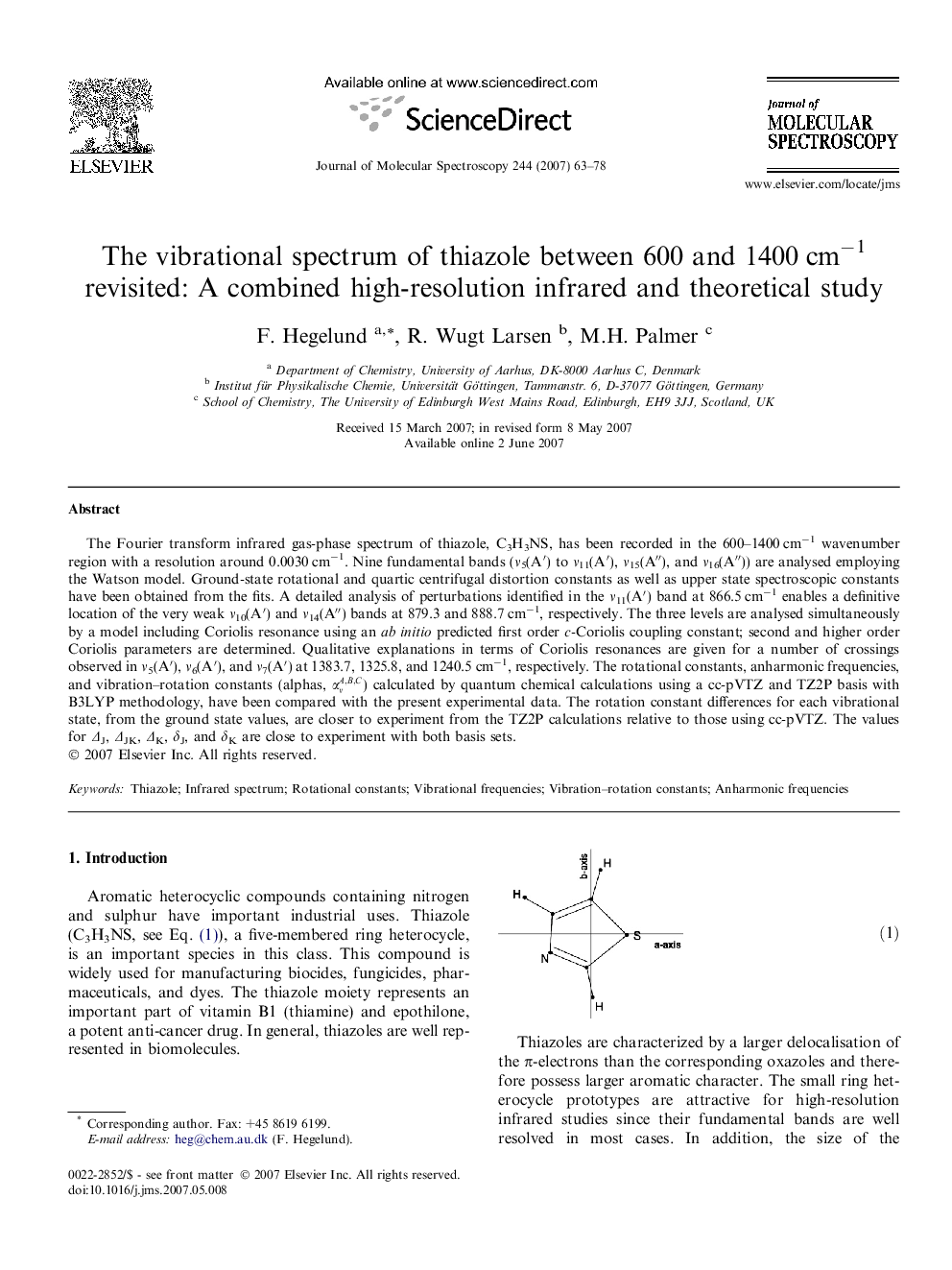| Article ID | Journal | Published Year | Pages | File Type |
|---|---|---|---|---|
| 5415802 | Journal of Molecular Spectroscopy | 2007 | 16 Pages |
Abstract
The Fourier transform infrared gas-phase spectrum of thiazole, C3H3NS, has been recorded in the 600-1400 cmâ1 wavenumber region with a resolution around 0.0030 cmâ1. Nine fundamental bands (ν5(Aâ²) to ν11(Aâ²), ν15(Aâ³), and ν16(Aâ³)) are analysed employing the Watson model. Ground-state rotational and quartic centrifugal distortion constants as well as upper state spectroscopic constants have been obtained from the fits. A detailed analysis of perturbations identified in the ν11(Aâ²) band at 866.5 cmâ1 enables a definitive location of the very weak ν10(Aâ²) and ν14(Aâ³) bands at 879.3 and 888.7 cmâ1, respectively. The three levels are analysed simultaneously by a model including Coriolis resonance using an ab initio predicted first order c-Coriolis coupling constant; second and higher order Coriolis parameters are determined. Qualitative explanations in terms of Coriolis resonances are given for a number of crossings observed in ν5(Aâ²), ν6(Aâ²), and ν7(Aâ²) at 1383.7, 1325.8, and 1240.5 cmâ1, respectively. The rotational constants, anharmonic frequencies, and vibration-rotation constants (alphas, ανA,B,C) calculated by quantum chemical calculations using a cc-pVTZ and TZ2P basis with B3LYP methodology, have been compared with the present experimental data. The rotation constant differences for each vibrational state, from the ground state values, are closer to experiment from the TZ2P calculations relative to those using cc-pVTZ. The values for ÎJ, ÎJK, ÎK, δJ, and δK are close to experiment with both basis sets.
Related Topics
Physical Sciences and Engineering
Chemistry
Physical and Theoretical Chemistry
Authors
F. Hegelund, R. Wugt Larsen, M.H. Palmer,
